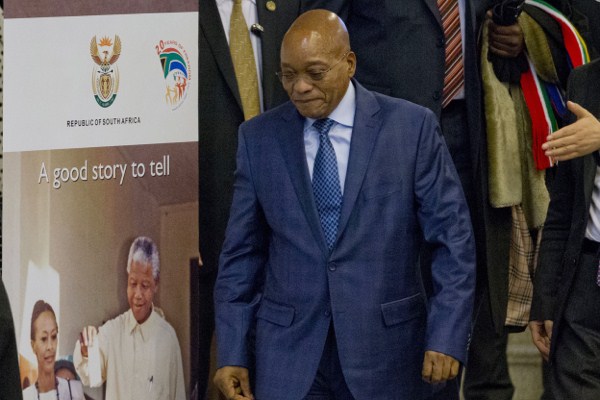The past two years have been deeply unsettling ones for South Africa’s economy, defined by sluggish growth rates, power shortages, service delivery protests and endemic labor unrest. International ratings agencies are getting wary and could eventually downgrade the country’s sovereign credit rating. President Jacob Zuma’s government is currently failing to satisfy any of the key constituencies with a material stake in its economic policy: its own support base, an increasingly fragmented labor movement and investors at home and abroad. Like other emerging markets around the world, including the once-solid BRICS, South Africa’s economy is in a sea of trouble.
Since Zuma came to the presidency in 2009, South Africa’s growth rates, averaging between 2 and 3 percent, have fallen short of the 6 to 7 percent level required to address mass unemployment or to sustain the government’s huge outlay on social grants, which are keeping some 16.4 million people out of absolute poverty. In 2014 things worsened further, with growth recorded at an underwhelming 1.5 percent—the lowest figure since 2009. This was a consequence of protracted strikes in the mining and manufacturing sectors and electricity shortages caused by chronic mismanagement and an absence of forward planning at the country’s power utility, Eskom. The International Monetary Fund (IMF) has forecast sluggish growth of 2 to 3 percent for the next five years.
This economic lethargy stands in sharp contrast to the established view of South Africa as an African economic powerhouse and leader among the BRICS. In fact, South African economic growth currently lags behind both sub-Saharan Africa’s average—4.5 percent in 2014—and that of its fellow BRICS members, which are themselves beset by a range of economic woes, with capital flowing out of Russia, China, India and Brazil. South Africa’s record on inclusive growth—the extent to which it includes and benefits the poor—is worse than that of Argentina, Brazil, China, Malaysia and Russia. The flow of investment into South Africa also continues to disappoint as power shortages, protracted industrial action and political uncertainty erode investor confidence.

